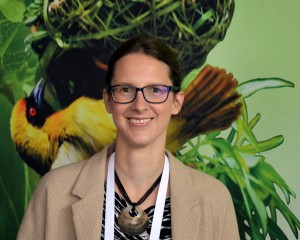Interview: Marjana Westergren
Dr. Marjana Westergren is a researcher at the Slovenian Forestry Institute. Her main topics of interest are population and landscape genetics, management and conservation of forest genetic resources and adaptation of forest tree populations. She is giving a short lecture at the XIV World Forestry Congress in Durban, South Africa about the development of a system for forest genetic monitoring at the EUFORINNO Workshop (9.9.2015, 19:45, Hall 3A). I met her in the Congress hall, where she answered a few of my questions:
What is being a scientist like?
For me, it’s really nice to be a scientist, because you get to find out new things. The best thing about it is when you analyze the data, see the results, interpret them and see: this is something that I figured out, and my colleagues have figured out with me and we actually have done this! And this might help somebody right now or in the future. It’s a really rewarding feeling and it makes you [keep on].
Can you give us some insights on how it is to be a female scientist?
Sometime it’s difficult to balance work and family life – kindergarten, school, work, writing papers, applying for projects, etc. Otherwise, it’s really nice to be a forest scientist. I don’t think there is a big difference between men and women in science. I think that we do an equally good job. But I do feel that it’s important to have both, because we complement each other and better answer to the questions asked. At our department at the Institute, most of the scientist are women, especially young women. I don’t feel that I have a disadvantage for being a woman in science.
Can you talk more about your research area? Why is it important?
I mostly work with forest genetic resources, which are a very important part of forest biodiversity. Genetic resources and their diversity are the basic component of all biodiversity and deserve to be recognized and studied. If we will not take care of our genetic resources, we might lose our forests. They might be so impoverished that they will not be able to fulfill the functions (ecological, economical and societal) that we rely upon. They are “the base of the pyramid” in the forests. People usually don’t realize this because they’re not visible to the human eye, but that makes them even more important in the long run.
– Boris Rantaša, Project Dissemination Manager
This interview and Marjana’s research are made possible by FP7 EUFORINNO and LIFE+ LIFEGENMON (LIFE for European Forest Genetic Monitoring System) project.













 Saving...
Saving...
Leave a Comment